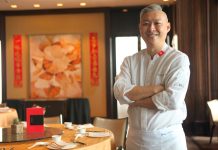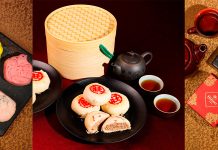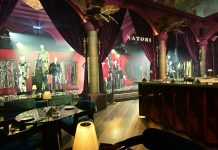What is your favorite place in China? This question popped up on my Facebook wall. The Chinese Embassy in Manila organized an essay contest, and the theme was to talk about any spot in China you have either visited or plan to visit.
This got me thinking. Images flashed before me as I recalled my three-year stay in the land of my ancestors. I’ve lived in the CBD section of Beijing, in Haidian District which is the university belt of Beijing, in one of the poorest counties of Shanxi Province, and in Mudianjiang City in Heilongjiang Province, Northern China. I moved among different circles—educators, businesspeople, students, expats like me, and the masa (common people). I was there during the 2008 Olympics, and I must say the new buildings constructed just for the event left me in awe. I’ve been to many tourist spots, and I love going to the local shopping places foreigners do not really frequent. China is an amazing place!
So what is my favorite place in China? Not a city or a county, not a shopping mall or a wholesale market, not the hutong (alleys) or siheyuan (courtyard houses), not the restaurants or street food stalls, but a historical site.
My all-time favorite, which I wouldn’t mind seeing again, is the Temple of Heaven—§—坛 (tian tan). Strictly speaking, this is an altar, not a temple. This was a unique experience, because I went there during the height of the SARS virus scare. (Remember Severe Acute Respiratory Syndrome?)
I have long wanted to go to the Temple of Heaven, but as with all the top attractions I’ve been to, you can’t really avoid the crowd, a mix of locals and foreigners. This means you can’t fully enjoy the beauty and solemnity of these ancient structures without your muni-muni being disrupted by endless chatter and kodakan. At that moment, the timing was right. I proposed to my colleagues that we take this opportunity to see Tian Tan because people were avoiding China like the plague, pardon the pun.
The Temple of Heaven is located in Southern Beijing and was built in 1420. It is now registered as a Unesco World Heritage Site. The Emperor (the Son of Heaven) traveled from the Forbidden City to this place to worship. Ordinary people were denied entry. Seen from above, it is a complex of religious buildings bound by walls and two distinct shapes can be seen: circles representing heaven and squares representing earth. There were five things I was dying to see.

The Altar of Prayer for Good Harvests: Some Chinese products have this iconic structure in their packaging. It’s a bluish-purplish circular building with three layers covered by umbrella roofs with a gilded golden ball at the tip. It rests on a three-tiered marble base. I was able to see clearly inside without being elbowed, or me elbowing somebody. The entire structure is made of wood and—get this—no nails. Look up, and in the middle of the ceiling there is an image of a dragon, symbol of the Emperor. Blue is used to represent heaven, and there are numerological symbols. Four inner pillars represent the four seasons, 12 middle pillars the 12 months, and 12 outer pillars the 12 two-hour times. I was able to soak in the beauty and grandeur of this place, because with nary a soul shoving me, I was able to take my time.
The Imperial Vault of Heaven: This looks like the Altar of Prayer for Good Harvests, but has only one layer standing on a single-tier marble base. It houses God’s tablet, to be used at the Heaven Worship Ceremony. I was ecstatic because, again, since there were very few visitors that time, it was quiet enough for me to try the Echo Wall and the Triple Sound Stones I’d read about!
The Echo Wall, a.k.a. The Whispering Wall, surrounds the Imperial Vault. I stood on one side and my friend went to the opposite end of this 193-m smooth wall. I whispered “X, can you hear me?” and I clearly heard his reply. Then we started to have a conversation! How cool is that? To this day I’m still tickled pink when I recall the experience. I’ve heard many people say it didn’t work for them. Why? The place is usually crawling with tourists, so imagine everybody trying to whisper at the same time. You can practically hear everybody without the wall, hello! There is a scientific explanation about reflecting sound waves off smooth surfaces, but to me it was magical, and I leave it at that.
Outside the gate of the Imperial Vault are three rectangular stone steps. If, facing the vault, you stand on the first stone and clap or shout once, you’ll hear one echo. Do this again while standing on the second stone, you’ll hear two echoes. On the third stone, you get three echoes. I wasn’t very successful with this one. No matter where I stood, I could only hear one echo. Oh well.
Circular Mound Altar: This is the altar proper where the Emperor prayed and offered sacrifices during the winter solstice. It is an empty outdoor platform built on three layers of marble intricately carved with dragons. Right smack in the middle is a slightly elevated round stone—the Heart of Heaven. I stood there as long as I wanted because, again, there was only a handful of people. I felt giddy. Then I opened my mouth and spoke. It was like speaking into a microphone! The loud, booming, resonating, sonorous echo my voice created made me feel so powerful! So this is how the Emperor communicated with heaven! Again, there are scientific theories of sound at play here, but I’m ignoring them. As far as I’m concerned, the Temple of Heaven is an enchanted world showing me glimpses of a glorious past, a time when the people of China worshipped Shang Di—God, Heavenly Ruler, Supreme Deity, Creator.
I regret not fully documenting my Temple of Heaven escapade, but you can see clearly that I can liken this wonderful day to the Philippines during a Manny Pacquiao fight. And, boy, am I glad I lived to tell this story.
Illustration by Paul Fabila
Discover more of the beauty of the Temple of Heaven on Asian Dragon Magazine’s February – March 2017, available for download on Magzter.






































